June is the half way point of the Summer with the longest day of the year on the 21st and probably the best time of the year in the garden with everything coming into it’s best with huge growth .
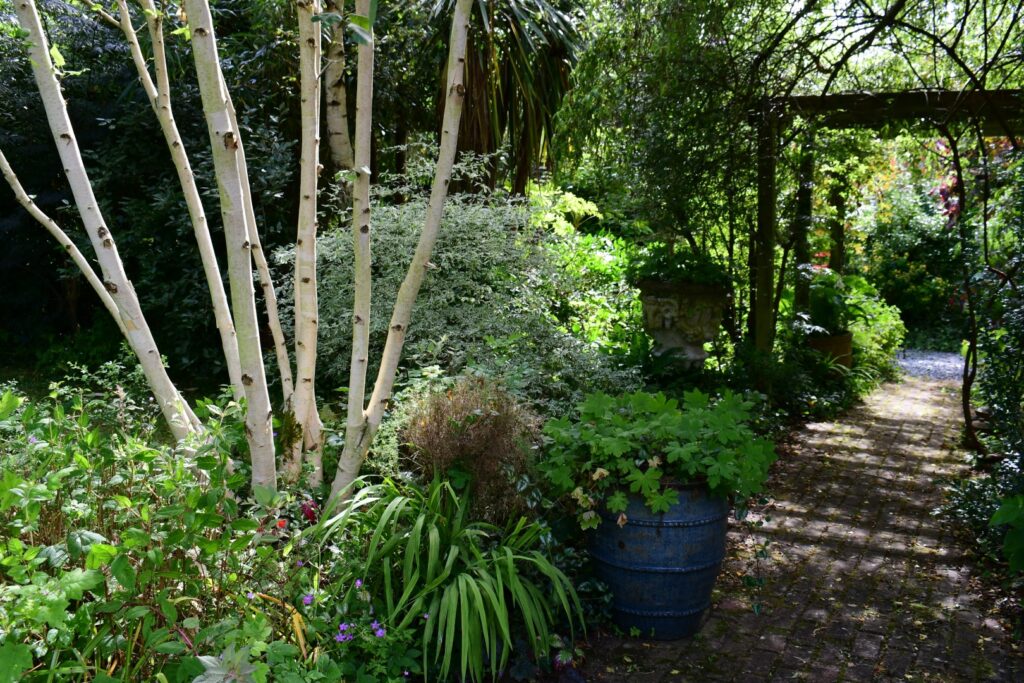
That growth of course also includes the weeds and a neighbour asked me this week how to deal with a patch of weeds underneath a line of trees … if you are careful not to hit anything in leaf then a glyphosate like round up was my reply … can’t he says the wife is against it … does your wife weed … no he says … mine neither so there’s your answer .. round up every time !
I find that female gardeners always hate weed killer but the more practical men will always reach for the spray can … I can tolerate most so called weeds but I wage absolute war Putin style on both couch grass and creeping butter cup and there is no easy way with either of these thugs and you need to get hands and knees dirty to make sure you get all the roots otherwise they take over whole patches .
Weeding is a priority and it needs to be done in every garden , you need to be methodical about it and there are no short cuts although round up is great where there is no danger to other plants and I use it monthly throughout the year on the paths but I prefer to hand weed the beds and the shruberries .
The area in the Lower Wood with the new water way has heavy soil and luckily the weeds are of the wild flower variety apart from some spectacular thistles and I generally leave it to it’s own devices but once a year every June or July I give it an intensive weeding and thinning out by hand and take my time with it .

It is a difficult area to garden as the soil is a mix of concrete like clay and what grows best here are rushes which in their place can be sculptural but here there are too many of them and I take them out in barrow fulls .
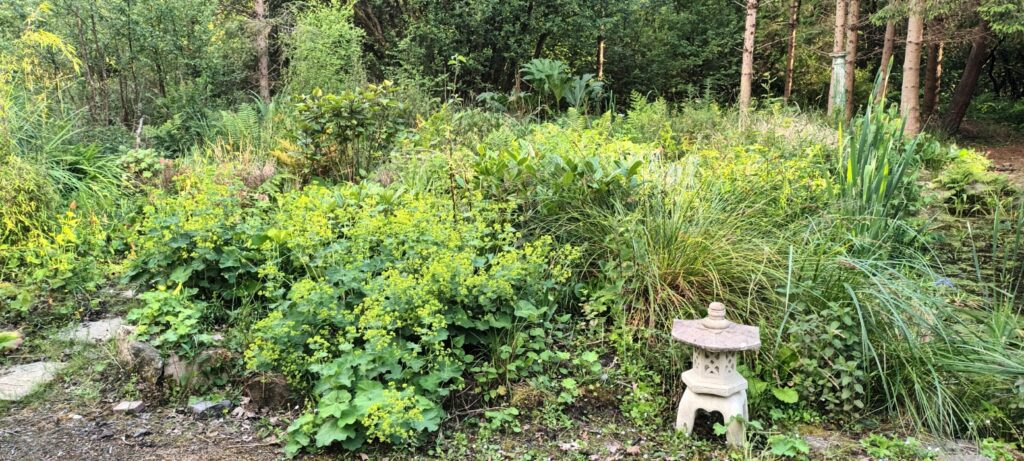
It takes me about four days weeding each year in June for this area and I leave it to it’s own devices for the rest of the year having removed the nettles and rushes … the deer are always around this area and over the past two years have eaten three newly planted silver birch jacquemontii but I notice after a year these specimen birches are now sprouting from the roots and the deer leave these “ second comings ” alone but the tree that grows back is the common irish birch from the original grafted rootstock not the expensive jacquemontii I planted but still a nice birch and I will take that .

I was surprised by the reaction of readers last month when I wrote about bergenias and it seems there is a love / hate relationship with the perennial and a quote from my sister Maria just about sums it up “I can’t stand Bergenias ,I’m allergic ,we have them in front garden too and I avert my eyes.” !
I agree that bergenias because they are evergreen can look a bit ragged in the winter but they will survive all weathers , damp to wet ground , total shade or full sun and if you maintain them by cutting out all dead or damaged leaves and give a general tidy up in Spring they are in my opinion the ideal filler in any location .
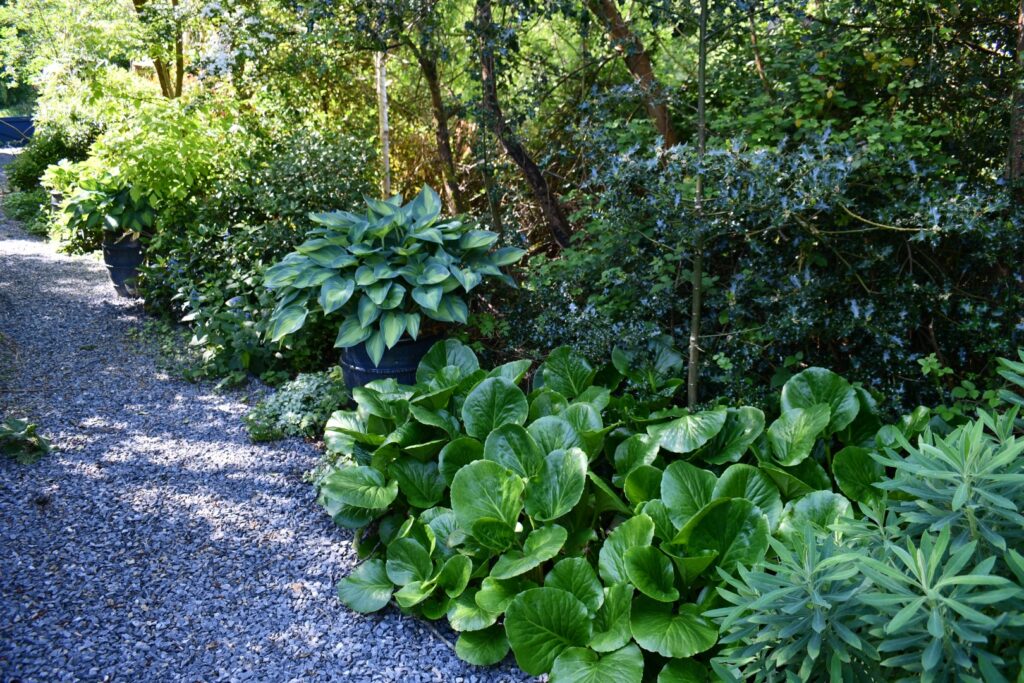
They also have a nice flower but I grow them for their huge leaves … they are not called elephant ears for nothing … and their sheer survivability anywhere in the garden .
Snap off a bergenia leaf at the base , pot up and you have a new plant in a few weeks .
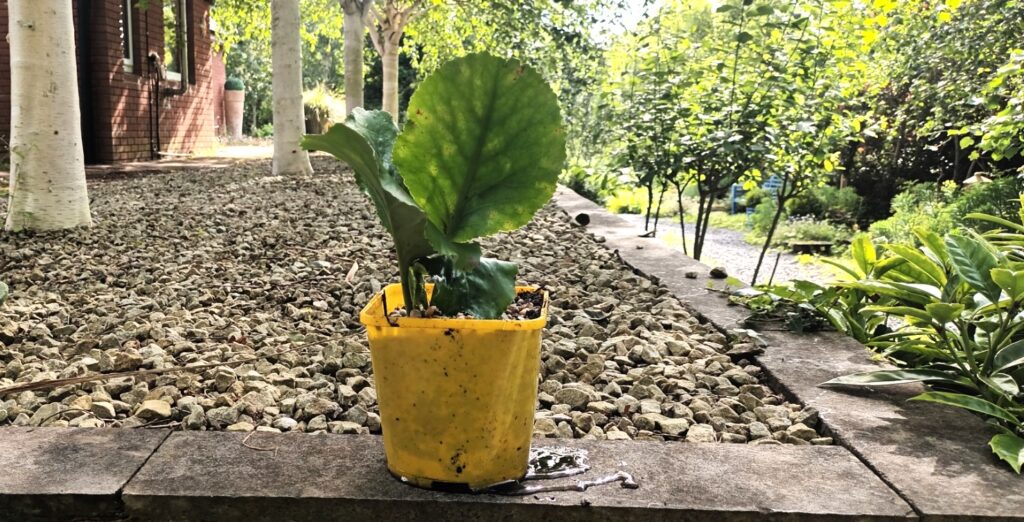
A shrub that is in full bloom from now until the end of August is the Hypericum and again like the Bergenia a great performer in most locations although it flowers best in full sun . Hypericum is usually sold in it’s compact form known as Hypericum Hidcote but I find that in time all varieties will grow to five feet and it responds to a good hard pruning in spring in fact hypericum needs a hard cut back to keep it from getting leggy .
The shrub pops up all throughout the garden here with the seeds carried by the birds from it’s berries and it is a prolific self seeder … I generally let it grow on in it’s chosen spot but I also regularly pot up seedlings and transplant them around the garden with the result that we now have mature bushes of hypericum throughout the garden … a must for every garden with evergreen olive green leaves topped with a huge amount of yellow flowers in the summer .
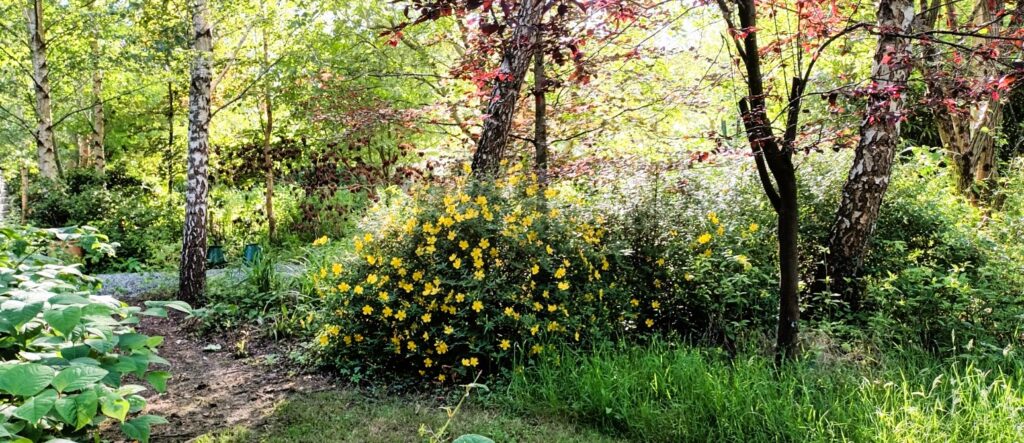
Like hostas the euphorbia is a top favourite perennial of mine and the variety wulfeni with it’s all year round architectural leaves is the one to go for , look after it well and it will flower from April to June and continue to look good throughout the year .
But and there is always a but with every plant , euphorbias need quite a bit of maintenance once they finish flowering otherwise the plant will die out within two years or so . For a start the old flowering stems need to be rigorously cut out at the base once the flower bracts have gone off and you also need to take out any old woody stems even ones that haven’t flowered … the plant will look a bit woe begone for a few weeks after the yearly hard pruning but will quickly recover as the new shoots push through … when you have a lot of euphorbias like we have here at Old Spa Road this annual pruning is a huge chore but worth it just to keep the stock looking healthy and the plant will reward you by self seeding like mad and our gravel section is full of euphorbia seedlings which I pot up and plant out on a regular basis … never a dull moment with work in the garden !
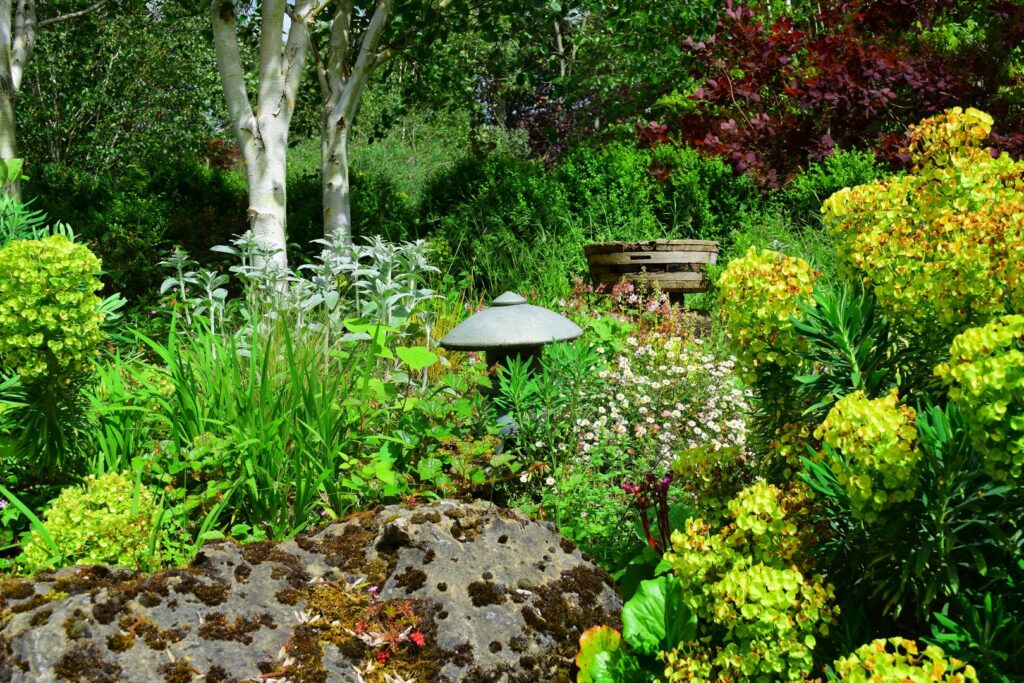
The garden trend all over Ireland and the UK for the past few years is wild gardening and while I resisted it for a long while thinking it was just lazy gardening as in don’t mow the lawn , I am beginning to warm to it in wet areas and three years ago I allowed an area to go wild just cutting pathways through the long grass … the area is too wet to be a true wild garden as for this you need impoverished dry soil but over the three winters I have planted gunnera , iris’s and native silver birch whips and the overall effect is coming along nicely to a good look where nothing else really worked .
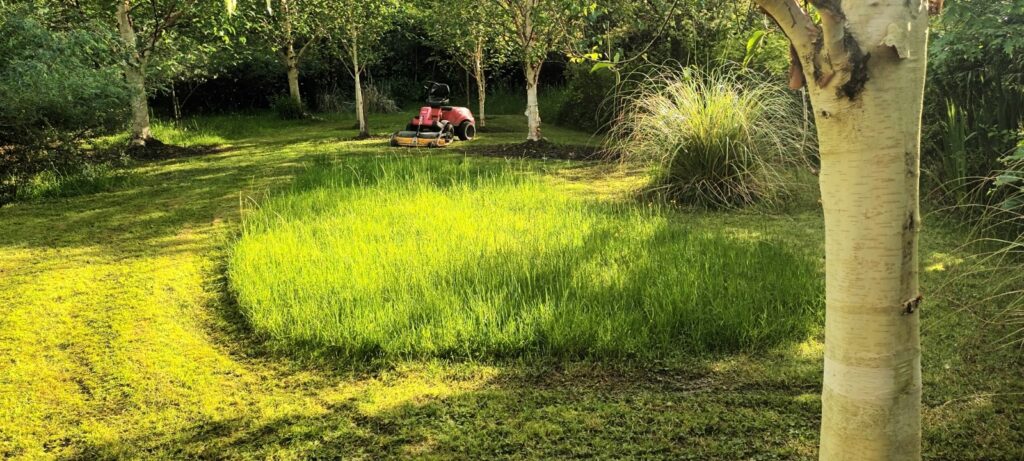
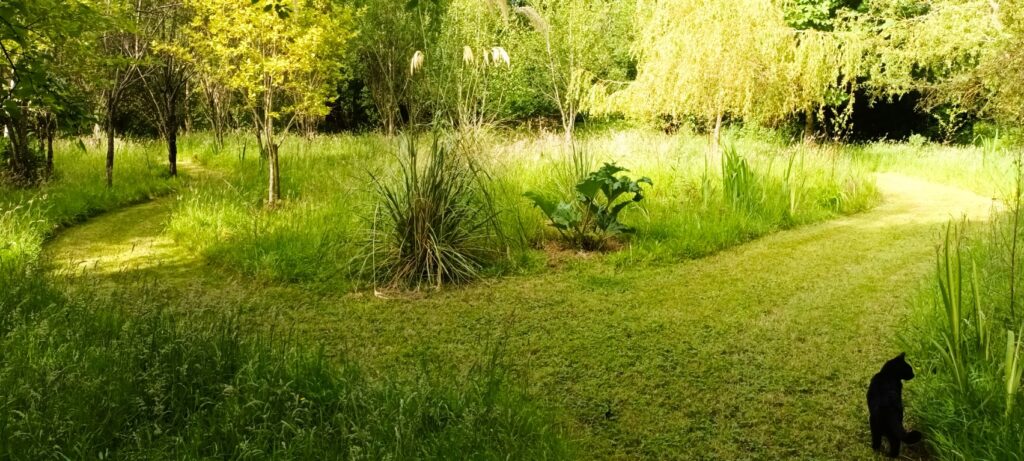
I often write about olive trees in Croatia and there is something really special about an olive landscape which we can never have here with our general lack of sunshine not to mention the sodden soil from almost daily rain but we can grow olive trees in pots and like anything grown in pots they need maintenance .
This particular olive tree has had a Lazarus type life as it almost died in it’s first location at the front of the house but I cut it back to almost the base then left it recover in a sheltered location until it came back to life gradually … I give it a light trim usually in Spring but had to delay it this year until last week as two foxgloves had self seeded in the olive pot and I wanted to let them flower .
I removed the top third of the soil from the pot and replaced it with John Innes compost , gave it a good feed of slow release fertiliser and topped it all off with two inches of pea gravel which keeps in moisture but also gives a nice finish . The olive tree never fruits of course in our climate but it bring a lovely feel of the mediterranean to the garden !
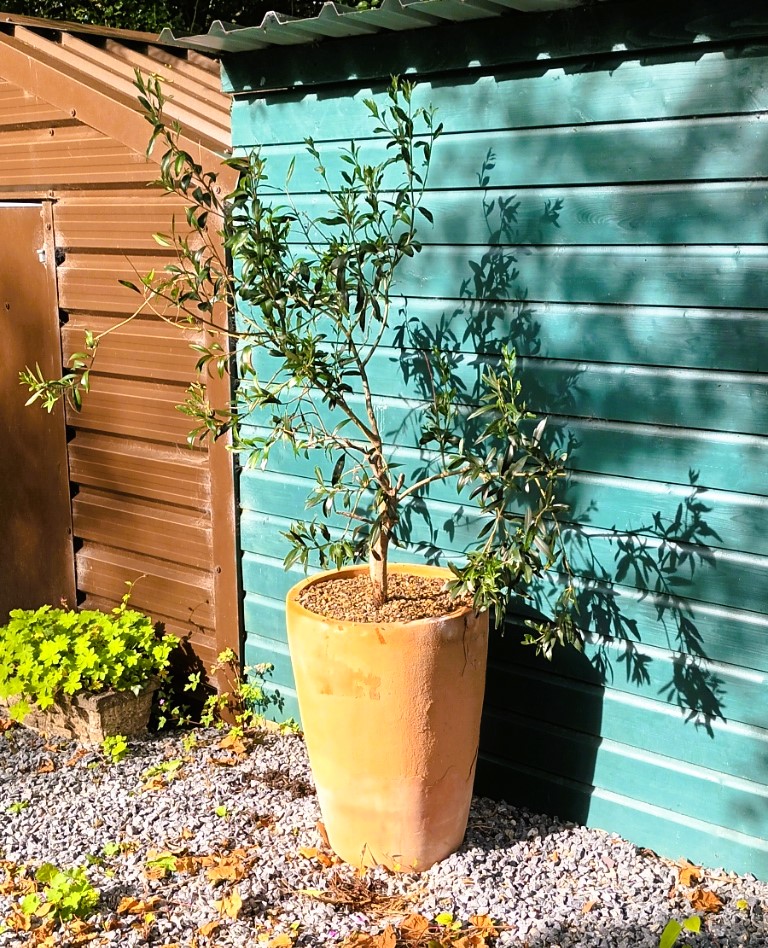
Snezana and I rarely work together in the garden as from experience it always ends badly … I know the essential jobs that need to be done and am accused of being a dictator if I insist that these be done to a schedule on a regular basis whereas she likes to be a free spirit about gardening chores … the result is that Snezana does her own thing in the garden and only works on stuff she enjoys however there are joint projects that work well and this week we combined to work on an overgrown parrotia tree area and clearance of patio of invasive pampas in the Lower Wood area .
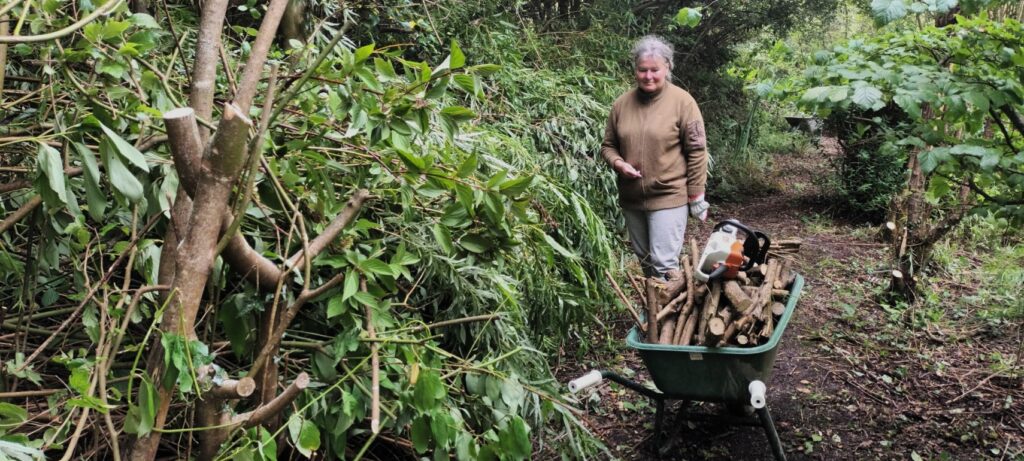
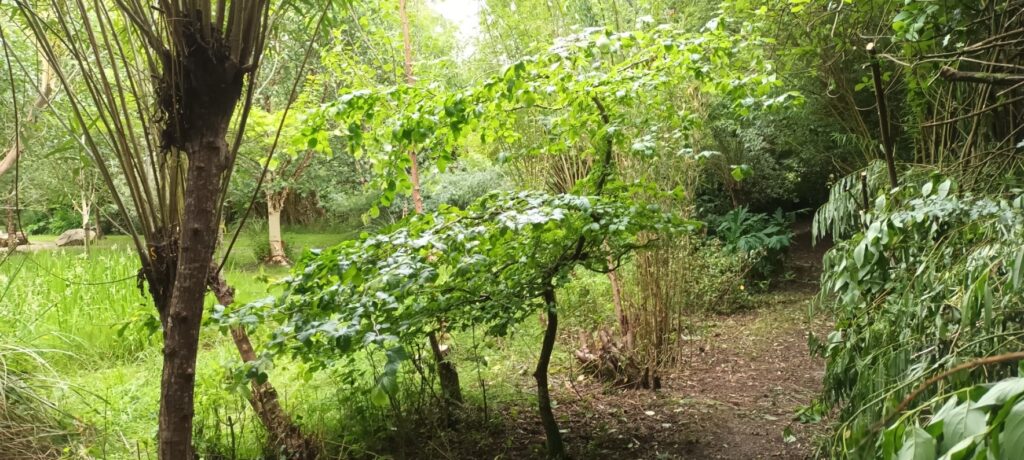
A lot of work involved which to be honest would not have happened without Snezana’s vision as I tend to be taken up with the level of daily maintenance needed for a garden of eight acres whereas she saw that the lovely parrotia tree had been overwhelmed by the growth around it , didn’t have room to sprawl while the patio was almost taken over by huge self seeded pampas grass recardii .
The summer flowering pampas grass variety richardii is a favourite architectural plant of mine and difficult to source but it is hugely invasive in our garden something I was really pleased about until I realised it would grow in your ear as they say in the west of Ireland . It was introduced to the UK in the 1980’s and is a native of New Zeland’s South Island where it’s Maori name is Toe – Toe pronounced Toy Toy , it suckers like mad and has already become invasive here and it really lives up to the phrase be careful what you wish for because when I first got it we couldn’t get enough of it and potted it up enthusiastically and giving it away as gifts to other gardening friends … please forgive us !!
It was a horrible job digging out the richardii real crow bar stuff which amounted to elder abuse on my part but out it came and we will be careful in future where richardii self seeds and tackle it early on … that said I still love the plant , it is very graceful and elegant in the right place and where you choose the spot .
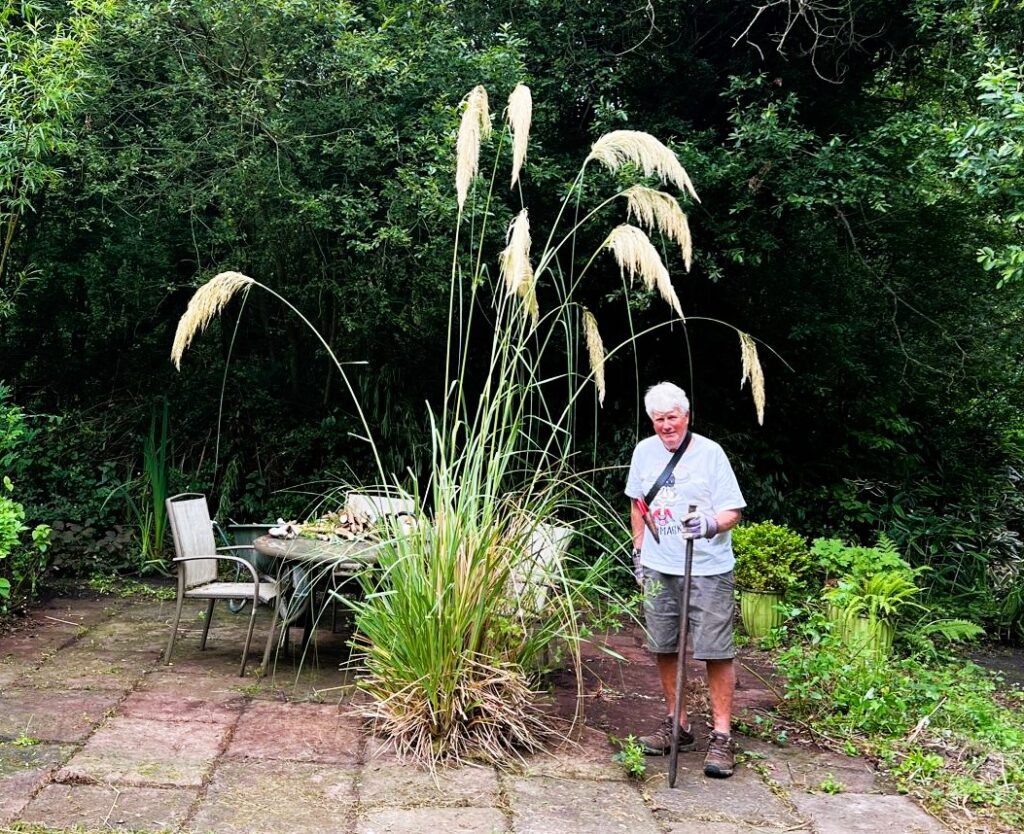
And how the reclaimed patio area looks now
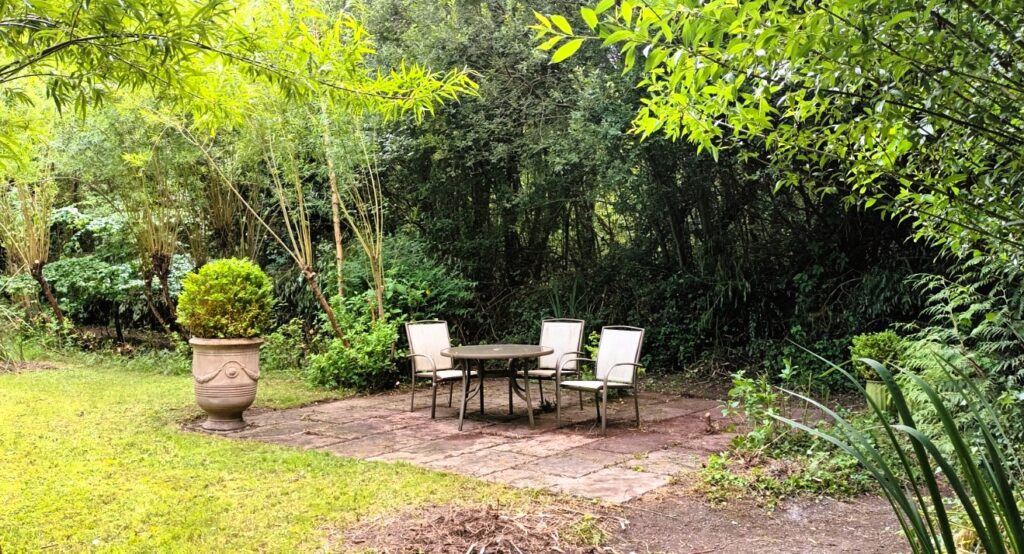
Colour and growth in the Garden June 2024

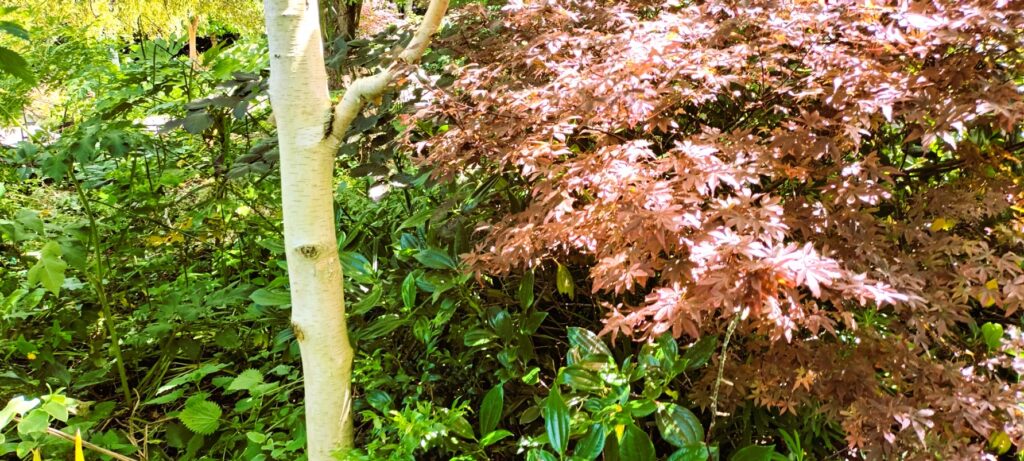
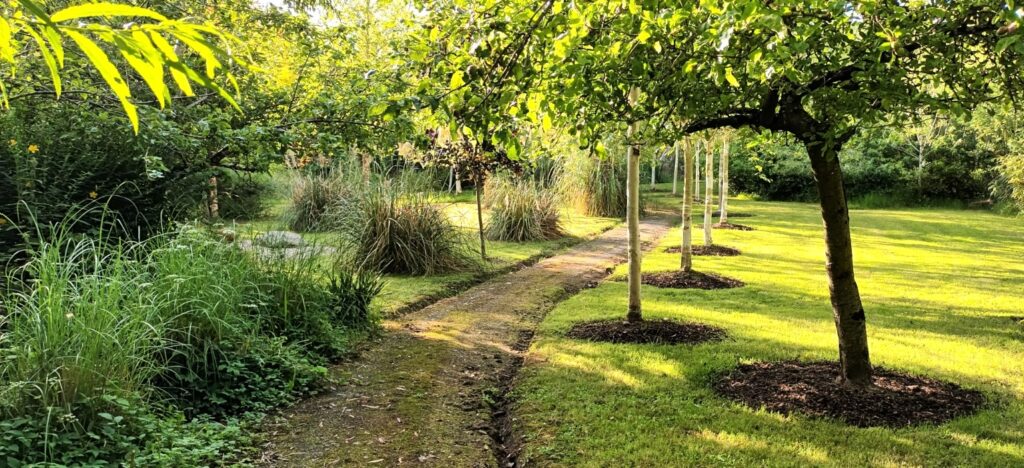
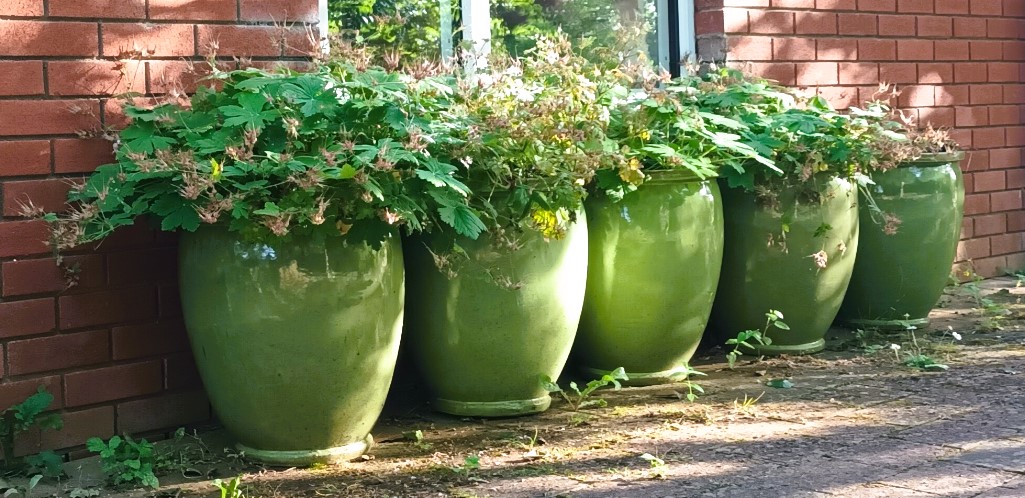
Enjoy the rest of the summer and remember we are now closer to Christmas !


Leave a Reply